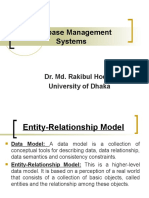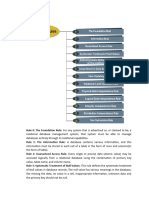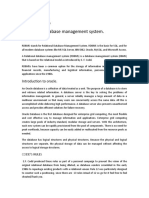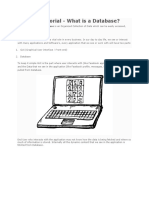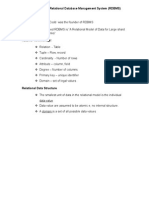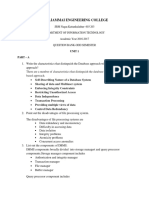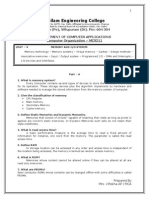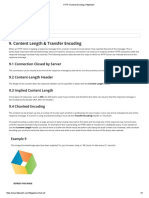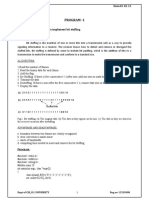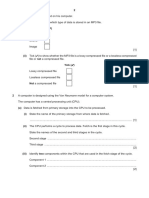0% found this document useful (0 votes)
246 views29 pagesRDBMS Concepts
The document discusses concepts related to relational database management systems (RDBMS). It defines key terms like relations, tuples, attributes, domains, and describes how data is organized in tables with rows and columns. It also provides examples of popular RDBMS like Oracle, SQL Server, and DB2. It discusses Dr. E.F. Codd who developed 12 rules for RDBMS and his seminal contributions to relational database theory.
Uploaded by
sam sayedCopyright
© © All Rights Reserved
We take content rights seriously. If you suspect this is your content, claim it here.
Available Formats
Download as PDF, TXT or read online on Scribd
0% found this document useful (0 votes)
246 views29 pagesRDBMS Concepts
The document discusses concepts related to relational database management systems (RDBMS). It defines key terms like relations, tuples, attributes, domains, and describes how data is organized in tables with rows and columns. It also provides examples of popular RDBMS like Oracle, SQL Server, and DB2. It discusses Dr. E.F. Codd who developed 12 rules for RDBMS and his seminal contributions to relational database theory.
Uploaded by
sam sayedCopyright
© © All Rights Reserved
We take content rights seriously. If you suspect this is your content, claim it here.
Available Formats
Download as PDF, TXT or read online on Scribd
/ 29


